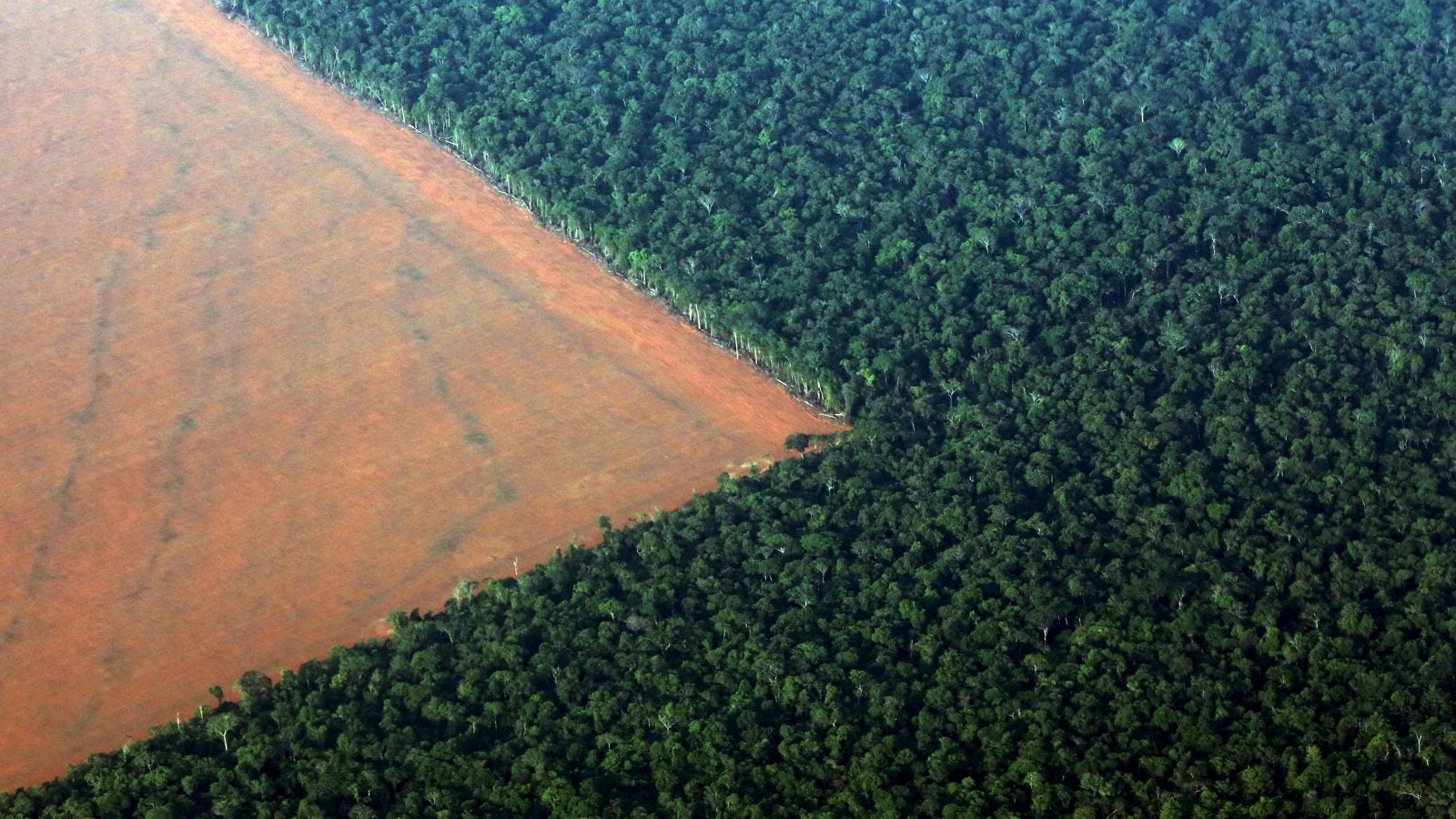The world’s biggest forest destroyers don’t even know which forests they’re destroying
Here’s a conundrum faced by everyone who wants the world’s forests to be preserved. When you pick up a bottle of shampoo or a takeaway meal, how can you make a choice that isn’t going to spur deforestation? We know growing palm oil, to take one much-used example, can and does lead to rainforest devastation, but any information linking that with the chocolate or toothpaste on a supermarket shelf (both of which often contain palm oil or its derivatives) seems so opaque, the supply chains so endless and twisting.


Here’s a conundrum faced by everyone who wants the world’s forests to be preserved. When you pick up a bottle of shampoo or a takeaway meal, how can you make a choice that isn’t going to spur deforestation? We know growing palm oil, to take one much-used example, can and does lead to rainforest devastation, but any information linking that with the chocolate or toothpaste on a supermarket shelf (both of which often contain palm oil or its derivatives) seems so opaque, the supply chains so endless and twisting.
Turns out the company selling and even making that product probably doesn’t know either. According to a report released today by CDP, a UK-based non-governmental organization that promotes corporate transparency on climate-related risks, only 30% of manufacturers and retailers that reported on their deforestation risks could pinpoint where their supply chains began.
CDP has been asking companies to answer questions on their links to forest destruction, and what they’re trying to do about it, since 2009. This year, in part thanks to pressure from shareholders which CDP says represent $22 trillion in worth, more companies than ever disclosed data: 200 from a cohort assessed to be the “largest and most impactful” when it comes to deforestation globally, and including brands like Starbucks, Nestlé, and McDonald’s.
Overall, though, the response rate was just 21%, CDP said, leaving massive gaps in knowledge about what forests are being destroyed by whom.
The problem is one of complexity.
“We’re talking about supply chains that are really vast,” said Katie McCoy, head of forests at CDP. The big deforestation products are cattle, palm oil, soy, and timber. If you think about a hamburger, McCoy explained, there’s palm oil in the bun, beef in the patty, and soy used for animal feed. The box it comes in was once part of a tree. ”Even in one product or one meal you’ve got multiple commodities, and each one of those will have had a very vast and global, complex supply chain,” she said.
Even when a product is technically traceable to a source country or region, McCoy said, the problem isn’t solved, because without being on the ground or having absolute trust in every link of the chain, a company can’t know exactly how a soy crop is produced or a tract of land cleared for grazing.
Companies, though, also have vast resources and, arguably a responsibility to consumers at least to know what impact their business has.
Some are certainly trying to master the problem. Unilever, a consumer goods giant that produces a host of well-known brands, is mentioned in CDP’s report as taking seriously the threat to its portfolio posed by forest loss and resultant damage to environments, habitats, and people. The company has said it will try to source commodities from areas with strong programs of forest preservation.
Deforestation accounts for about 15% of greenhouse-gas emissions globally, and stopping it is high up on the agenda for trying to prevent catastrophic climate change.
So what about people buying moisturizer or bread—how do we make better choices? McCoy says that some of that work is being done by supermarkets (she specifically mentioned Marks & Spencer in the UK, but UK chains Tesco and Sainsbury’s also disclosed to CDP), demanding better sourcing from their suppliers.
People can also take a look at the list of the companies that failed to disclose any information at all. They’re on pages 39-46 of this report.